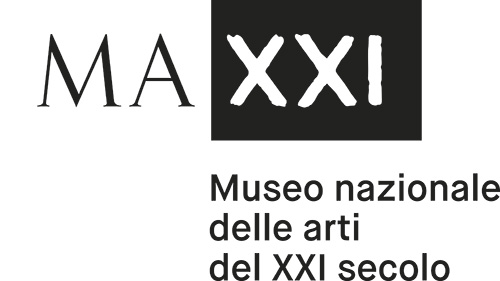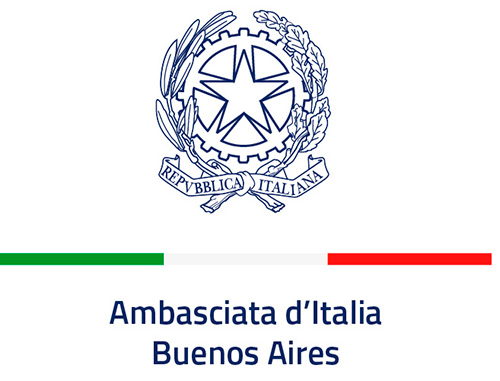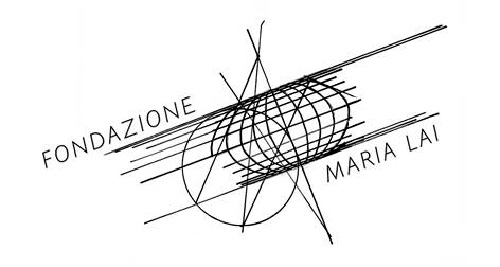Maria Lai (Ulassai, 1919-Cardedu, 2013), is one of the most prominent voices in Italian contemporary art; long before the latest research on relational art, she conceived a globalized language that brings sensibility and local traditions together. Her research is at the heart of a more than ever current interest concerning the dialectic between the individual and the community and operates as a possible solution to the conflict between individual identity and public action, proposing and exploring questions.
Tucuman, 1960. She is an artist, teacher and researcher. She obtained numerous scholarships among which the one granted by the Antorchas Foundation to work in the Barracas Workshop (1994-1995) and the DAAD to study at the Kunstakademie Düsseldorf, Germany (1996-1997). Since the Nineties, in an incipient contemporary art scene like that of her province, she has played different roles by participating in and creating networks of analysis, production and management with colleagues from almost all over the country. In 2018 she won the first prize at the National Exhibition of Visual Arts. Her works can be seen in public and private collections such as those of the National Museum of Fine Arts and at the Bruzzone.
Julia Toro (Talca, 1933) is one of the most relevant photographers of Chile; in the middle of the military dictatorship, she was the author of the most outstanding portraits of the artistic movement of the eighties, with captures of memorable faces and performances in which authors such as Diamela Eltit, Pedro Lemebel, Jorge Teillier and Raul Zurita, participated among others. She was an eye witness to the bohemian and resistance cultural events of those years, and of the profound transformation in time of her city, Santiago.
She has also been a skilled portraitist of intimacy, with daily scenes of family dynamics that stand out for their naturalness. A special mention should be made of her work around eroticism. In each of the photographs such disinhibition is achieved that it is suspected that the image was shot automatically or that the artist was a clandestine spy at the scene. Julia Toro's audacity is also that of being one of the few photographers who have worked on male nudity.
She has published part of her work in the books Amor x Chile (Eight Books, 2011), with essays by prominent critics and artists; the photobooks Sons (La Visita, 2017) and Valparaíso (FIFV Ediciones, 2020).
Andrea Jeftanovic
The MUNTREF, which was founded in 2002, is a social and political outreach project of the UNTREF from an artistic and cultural perspective. As such, at every moment it reports on problems such as the gender issues today, in order to contribute positively to the process of accelerating equality.
Once again, for this reason, we started the year by dedicating ourselves to putting on stage the work of women artists who have not yet had a monographic exhibition in our country. We did this, for example, with the Brazilian Anna Bella Geiger (2018), the French-Moroccan Leila Alaoui (2018), the Polish Angelika Markul (2018), the Peruvian Claudia Coca (2018), the Argentinian Marina De Caro (2018), the Brazilian-Argentinean Carla Zaccagnini (2019) and the American Martha Rosler (2019).
We also dedicate our efforts to focus on the work of artists to whom an exposition would not have been dedicated, or have been absent for many years, as was the case with Gertrudis Chale's (2007) anthological exhibitions, Marcia Schwarz (2008), Raquel Forner (2013), Graciela Sacco (2014 and a tribute in 2018), and Annemarie Heinrich (2014). All of them
were the result of long research and management projects. On the other hand, the research and production of collective exhibitions such as Migrations (in) Contemporary Art (2015), among others, led us to reinforce this path presenting mostly female artists works.
Today, in 2020, we choose to continue this tradition by presenting Constellations. A Selection of Works rom the FRAC Collections at the MUNTREF Museo de Artes Visuales. A project organized from a series of micronarrations linked to aesthetics and contemporary works by Estefanía Peñafiel, Ymane Fakir and Kapwani Kiwanga. Meanwhile, at the MUNTREF Centro de Arte y Naturaleza, we present works by Bruna Esposito, an Italian artist whose work is centered on the four elements; furthermore, at the MUNTREF Centro de Arte Contemporáneo, the halls are occupied by the works of Italian conceptual artist forerunner of relational art Maria Lai, the outstanding Chilean photographer Julia Toro and the powerful artist from Tucuman Carlota Beltrame. In all cases - and continuing with our "art for all" - it is the first time that an exhibition dedicated to each of them is displayed in the varied public eye of Buenos Aires.
I would like to thank the MAXXI-Museo Nazionale delle Arti del XXI Secolo of Rome for their joint efforts and the Italian Council's and the Italian Embassy in Argentina's support as well. I also thank the collaboration of the FRAC, the French Institute and the French Embassy in Argentina and the collaboration of the House of the Province of Tucumán in Buenos Aires.
Finally, I would like to acknowledge the enormous work of the MUNTREF team led by Dr. Diana Wechsler, artistic director of the MUNTREF and BIENALSUR, which allows to move forward with these ambitious projects. This sum of effort allows us to enjoy the experience offered by these wonderful artists.
Aníbal Y. Jozami
Rector UNTREF
General Director MUNTREF
A journey from the 1960s, through Maria Lai's life, during the moment when the artist decisively shifted the direction of her activity. The exhibition itinerary is not displayed in a chronological order. It focuses on constant cross-references and interlinkages between each work, like a great woven pattern which is based on art experience. The selection of the works - that are sometimes "Untitled" because they are the result of intimate and daily creativity - pays homage to an often interrupted research, which returns, in some cases after many years as apparently postponed discussions.
The exhibition includes a selection of looms; a group of works that, from the mid 1960's, involved Maria Lai in an "everyday materials" research; materials which were either recovered or derived from the Sardinian tradition, conceived as a shift away from the artist's previous phase which was more clearly identified with Modernism. The thread appears as a predominant element in the looms: as a material and a concept of the work in a simultaneous way. In the same way that the artist's life and research are crossed by the desire of linking distant elements, the work is a connecting "thread" which can re-stitch the meaning of things. The loom unites this reflection with that of the warp: a basic scheme on which to elaborate infinite variations.
In the sewn fairy tales, the artist raises fresh questions concerning the potential of imagination as a basis for every learning and knowledge process. As Maria Lai said in 1994, underlining the distance between this research and the child's environment, "art is an adult's game", an invitation to re-examine our own insecurities and bring back into play the creative possibilities that are no longer remembered.
In the early 1980s, Maria Lai conceived the first works that she would continue to produce until the 90's in parallel with her sewn books. Due to a rereading of Sardinian folktales or of tales of her own invention, the artist developed a world of characters who live in complex situations and adventures but finally find a definitive path to salvation.
The Sewn Books describe Lai's special ability to conceive creativity as a kind of gift and to relate to the people close to her, either emotionally or intellectually, whether those figures are poets or philosophers which she feels connected to. Hence, in the titles of The Sewn Books you will find quotations from the artist's favourite texts and poems, as well as her practice of offering these works as gifts; these works were born in the domestic intimacy of a daily relationship with the material they are made of.
The writings that the thread imitates refer to the imagination of pre-literacy and childhood, and are a means of reflection on the artist's personal experience and on the processes of collective elaboration that underlie the forms of written knowledge. The works gathered here are generally the result of a production halfway between unconscious creative action and the desire to make the artistic object remain anonymous. They are proof of an inner landscape that sees the creative act as a way to connect with the people and the things that surround the artist. Terracotta, sand, cloth, thread, bread, velvet, enamel and gouache, all combined with found and recovered materials, contribute to create a personal symphony of materials and techniques that, with a sharp and iconic gaze, question the recognition of the most elementary forms.
Research into the works called Geographies began in the late 1970s and was carried out by Lai in the following decades. In this project, looking the other way is an additional stimulus to her artistic practice. These works, which are often made in contrast to dark or clear backgrounds, seem to invite the viewer to discover other worlds and to invent new cosmogonies. In these works, the mark of the thread becomes the astronomical reference line or a path to an imaginary journey. At the same time, it suggests the possibility of linking distant planets, which emerge almost imperceptibly from the backgrounds of the Geographies in order to emphasize their astral distance. The need to pick up distant elements in time and space - a
permanent desire in the artist's research - finds here a further dimension in the evolution of one's own identity through relationships with others. Maps, scrolls, geometric shapes alluding to still unknown stars speak of distant universes, which could perhaps be reached by imagination.
Maria Lai conceived many public space interventions and collective actions during the last decades of her research, starting with Legarsi alla montagna. In 1981, the artist returned to her place of birth, the city of Ulassai, and invited the local community to work together to create a collective piece on a large scale which would bring back the interpersonal, unconscious and ancestral links between the urban fabric and the surrounding territory.
During this community action in a specific place inspired by an ancient local legend, with the help of the villagers, the artist tied a blue ribbon to all the houses on the mountain of Ulassai. First, the initiative was accepted only after the establishment of a code clearly indicating the kind of relationship between the neighbors. A knot between the houses meant friendship, the absence of a knot, rivalry, and if you added a loaf of bread, love. The action began in Piazza Barigau, where usually take place the city's festivities; thirteen pieces of jean cloth were cut and sewn again to make the necessary fabric ribbon for all the streets of the city. After tying up all the houses, three Mountaineers took the ribbon to Mount Tisiddu and tied it to the top of the mountain. The action was recorded in a video made by the director Tonino Casula as well as through some pictures taken by photographer Piero Berengo Gardin, which were later retouched by the artist with a blue marker.
Curators
A project of the MAXXI-Museo Nazionale delle Arti del XXI Secolo in Rome in association with UNTREF of Buenos Aires. Project carried out with the sponsorship of the General Direction for Contemporary Creativity of the Ministry of Heritage and Cultural Activities and Tourism in the framework of the program of the Italian Council of Ministers (7th edition, 2019)






Maria Pietra's Looms (Telai di Maria Pietra) - 1994 - Témpera, terracota - 26 x 16 x 7,5 cm - Private collection
Sin título - 1991 - Hilo, tela - 18 x 16 cm - Colección privada - Foto Giorgio Dettori - Cortesía Archivio Maria Lai - © Archivio Maria Lai by SIAE 2020
Sin título - 1965 - Madera, hilo, pintura - 150 x 54 x 5 cm - Colección privada - Foto Lorenzo Palmieri - Cortesía Archivio Maria Lai - © Archivio Maria Lai by SIAE 2020
Legarsi alla montagna - 1981 - Marcador sobre impresión fotográfica de Piero Berengo Gardin - 16 piezas de 40 x 35 x 3 cm c/u - Colección privada - Cortesía Archivio Maria Lai - © Archivio Maria Lai by SIAE 2020
Sin título - 2009 - Plástico, marcador, hilo - 100 x 150 cm - Colección privada - Foto Giorgio Dettori - Cortesía Archivio Maria Lai - © Archivio Maria Lai by SIAE 2020
Sin título - ca. 2002 - Hilo, tela, témpera - 32 x 26 x 4 cm - Colección privada - Foto Giorgio Dettori - Cortesía Archivio Maria Lai - © Archivio Maria Lai by SIAE 2020
Maria Pietra - 1991 - Hilo, tela - 35 x 32 cm - Colección privada - Foto Giorgio Dettori - Cortesía Archivio Maria Lai - © Archivio Maria Lai by SIAE 2020
Sin título - 1989 - Hilo, tela - 180 x 238 cm - Colección MAXXI, en proceso de ser adquirido - Adquirida con el apoyo del Italian Council (2019) - Foto Giorgio Benni - Cortesía Fondazione MAXXI - ©Archivio Maria Lai by SIAE 2020
Among the four hundred drawings in the New Chronicle and Good Government (1615) by the chronicler Felipe Guamán Poma de Ayala there is one from the city of Tucuman. The manuscript is preserved in the Royal Library in Copenhagen and it is not known for sure how it got there. The ancestors of Carlota Beltrame are Danish and she has been living in this town for years. Not only she lives in it, she also suffers from it, enjoys it, explores it and communicates it. Carlota transmutes local issues in universal ones, and for this purpose she uses all the expressive means at her disposal, from the most popular handicrafts to technology.
How can we characterize a production that includes carving of stones, laser engraving, textiles, sound and light, among many other media? Maybe the key is in a phrase that our artist once quoted and which belongs to the theorist Kevin Power: "The poem is a political event, just as a popular revolt or a strike are poetic events." Indeed, if one examines each of her works one will see that poetry and politics go hand in
hand, they are enhanced, they are abyssed and elevated. The rescue of memory is one of her cornerstones, whether it be through the randa (a traditional lace), the tiles model "vanilla" that cover the streets of her city, the name of Hilda Guerrero de Molina (a woman who resisted the Lonardi and Onganía dictatorships), the humble sulphite paper that wraps the Milanesa sandwiches of the street vendors, or through the sounds of a village (from the Peronist bass drum in a march, barking dogs, children's laughter, even the cumbia La burrita). Carlota records the cultural horizons of her environment and manages to translate them into exquisite and seasoned objects. Her gaze is poetic; the burden is political. Just like that peruvian chronicler who was the singing voice of the people who were suffering the oppression of a colonizing empire, Carlota is the visual narrator of the history of her own province, she knows how to capture the essence of popular knowledge, of their crafts and customs, as well as of their struggles and endurances.
Curator

Four Sketches for World Order - 2017 - Polyptych - Gold, silver, tin and copper sheets on floor cloth, men's handkerchief, rag, kitchen cloth and brush - Gold: 81 x 58 cm
Julia Toro's (Talca, Chile, 1933) approach to photography is anything but programmatic; it wasn't until 1973 that her camera began to give us back what her eyes were insistently looking at. Perhaps because of this self-taught and spontaneous approach, her photographs are so different from each other and reveal, simultaneously, recurrent interests whose derivations constitute the three groups that make up this exhibition: the erotic photographs, the blurred ones and those that portray the artistic and intellectual Chilean in the 1980s. Despite the particularities of each "genre", the visual sensitivity that crosses the photographic style of Julia Toro reappears transversely, over and over again.
The expressive details of everyday moments become relevant (Lemebel's heels captured in their whimsical undulation, a bare leg entering a bathtub, a pipe about to release its smoke) to the detriment of the performances and the clarity of the shapes. The proximity of the photographic lens reveals the emotional link with the subject of the representation, the blurring of the image manifests the urgency of the gesture. Julia Toro manages to disappear after the naturalness of her shots, her presence does not seem to disturb the events that end up crystallizing in her photographs: precisely thanks to that circumspect and furtive look, her universe of images ends up being so intimate and familiar.
Curator

Diego Maquieira - 1980 - Digital transfer from 35 mm negative to Photo UltraSmooth 310 g paper cotton - Ultra chrome pro inks - 60 x 40 cm
Young Art Encounters - 1980 - Digital transfer from 35 mm negative to Photo UltraSmooth 310 g paper cotton - Ultra chrome pro inks - 60 x 40 cm
The Wild Detectives (Homage to Roberto Bolaño) - 2003 - Digital transfer from 35 mm negative to Photo UltraSmooth 310 g paper cotton - Ultra chrome pro inks - 60 x 40 cm
Untitled - 1980 - Digital transfer from 35 mm negative to Photo UltraSmooth 310 g paper cotton - Ultra chrome pro inks - 60 x 40 cm
Flamencas - 1977 - Digital transfer from 35 mm negative to Photo UltraSmooth 310 g paper cotton - Ultra chrome pro inks - 40 x 60 cm
Untitled - 1979 - Digital transfer from 35 mm negative to Photo UltraSmooth 310 g paper cotton - Ultra chrome pro inks - 40 x 60 cm